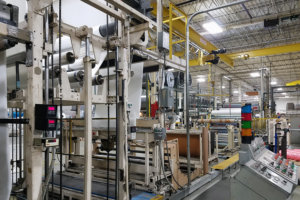The Benefits of Knife Over Roll Coating Systems Unmasked

That’s what we’re doing for you at CTI. While CTI can offer both roll coating and knife coating, we’re also able to walk you through knife over roll coating systems, vetting them carefully and helping you determine which one is best for your needs and goals. With that being said, let’s dive in to this topic and determine which strategy is best for your business.
What Do We Use Roll Coating For?
Many industries utilize roll coating—but the question is, why do we rely on it so much? The ultimate goal of roll coating is to achieve a certain kind of coated surface. The type of coated service depends on the project, and the roll coating technique and application is sometimes modified to fit the specific order (which, of course, we must approach with care). Multiple applicator rolls are usually locked into place, and we then apply a coating to a flattened substrate.
The coating may be adhesive, and varies in terms of thickness—though we may control the thickness of the applied layer through the rolls themselves. We may also apply etchings through this system, altering the appearance of the coated surface. Aside from basic coating, roll coating systems can also embed, print, and laminate surfaces. With that in mind, the process can serve a variety of different purposes.
With roll coating, we can serve industries like manufacturing, automotive, metal fabrication, and design engineering—among others. The versatility of this process is one reason why, so often, business owners have need of it. However, it’s not the only option available.
What is Knife Coating?
One potential solution for your coating needs is knife coating. In the case of roll coating, we cover rollers in a coating, sometimes followed by suspension in order to remove excess fluid through dripping. With knife coating, that excess coating is, in part, the point. We apply excess coating to a substrate, and then use a metering blade to remove the excess and smooth over the coating.
Some of the knife coating processes relied upon include knife-over-roll, floating knife, knife-over-fixed-table, and knife-over-conveyor. Quite often, you’ll see knife coating utilized for textiles, with the layers of coating ultimately being quite thin. A great component of this process is the amount of control the metering blade allows. This is one reason why it’s important to consider knife over roll coating systems, though of course it depends on the project as always.
What Are the Benefits of Knife Over Roll Coating Systems?
While there are benefits to roll coating systems, certainly, at times it’s best to choose knife over roll coating systems. There are benefits to choosing knife coating, and in some circumstances it’s easily the best option.
- Consistency. One reason why some small business owners choose knife coating over roll coating is that there’s a more consistent level of quality. In part, this is simply due to the precision of the blades involved, which we cannot replicate through roll coating. If you want a consistent quality of cut, you should consider knife coating strongly.
- Precision. With roll coating, it’s common for adhesive coatings in particular to build up over time. When using a blade, we can scrape the adhesive down to its thinnest layer, therefore avoiding the thickness that ruins the integrity of the coating.
- Preventing buildup. The precision of the knife coating system means that you can more easily apply thin layers of nonstick coatings. We use these coatings for materials like nonstick pans and other products exposed to food and plastics—in other words, products that easily build up over time.
- Corrosion resistance. With knife coating, it’s easier to apply coatings that won’t corrode over time, and are resistant to heat. Therefore, the products that you create with this coating process are in many ways more durable.
How Can I Execute Knife Coating?
Whether you want to utilize blade coating or roll to roll coating, you may want to reconsider coating your own products in house. We get the appeal of handling these procedures individually, rather than through a third party. However, working with a third party manufacturer doesn’t mean giving up control, and it doesn’t mean choosing a set of “ready made” products without any level of customization.
What makes a difference is the third party that you choose to work with. You must make sure that you work with a partner that will not only allow you to vet them, but will be forthright with what they can do for you. CTI considers partnerships with clients important, and will walk you through the production processes before asking for a commitment. Even then, you’ll approve a prototype and receive a pilot run before committing to CTI. These steps are incredibly crucial, as they allow you the control you want and need during production.
We recommend starting with an initial consultation. You can call us at 419-924-5566, or contact us directly here. Let’s discuss knife over roll coating systems, and see which option is best for your business.
- << < Previous Post
- 1
- 2
- ...
- 50
- ...
- 241
- 242 Next Post > >>

